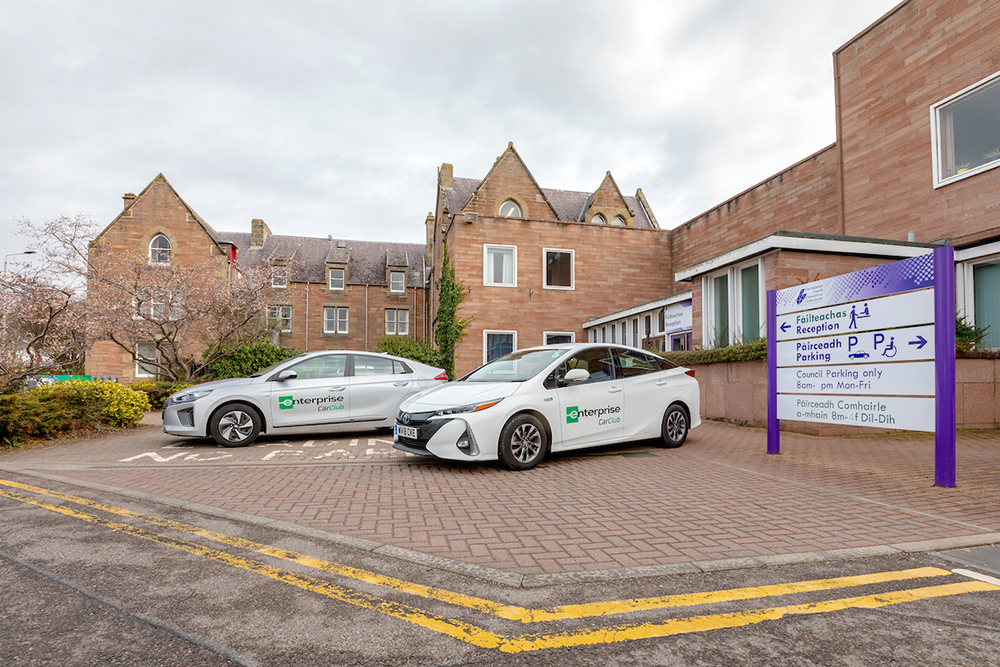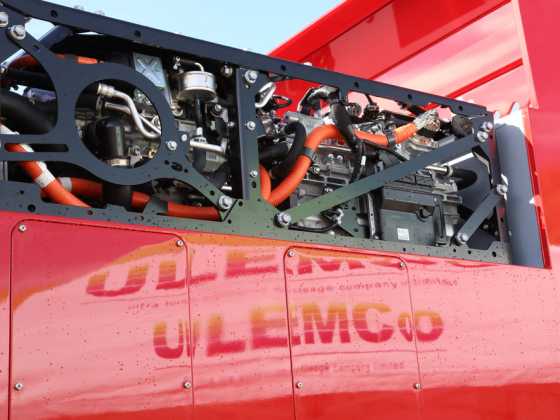Sustainable alternatives to corporate travel

James Lancaster, chair of the Urban Mobility Partnership, explains why grey fleet reduction should be incorporated at the heart of clean air, environmental and transport plans, and how it can be done
There is a major role for local authorities and businesses to play when it comes to changing and decarbonising corporate travel and commuting practices, such as grey fleet reduction.
The term “grey fleet” describes any personal car or van, owned and used by an employee, for business travel, which is then reimbursed at a rate per milage back to the employee. Traditionally, grey fleet is used by public sector bodies and local authorities, but private sector also makes use of the system.
Grey fleet usage is normally reimbursed at varying rates. Despite the Approved Mileage Allowance Payments (AMAP) system advocating that employees are reimbursed at 45p per mile for grey fleet usage, sometimes this figure is as high as over £2 per mile.
Grey fleet usage presents clear challenges focused on environmental concerns, high costings from the public sector bodies, and duty of care. Furthermore, the reimbursement model actively encourages private car usage, and is then regarded as a salary perk or additional benefit by the employee.
The pandemic
During Covid-19, the usage of private cars increased due to some of the government’s messaging around shared and public transport during the pandemic. Now that we are entering a “post-Covid” world, it is vital that these habits do not become permanent, and that other options – such as shared, active and multi-modal transport methods – are prioritised. In terms of business travel, although home working and video conferencing have increased in our changed world, there must be a concerted effort to ensure that sustainable corporate travel methods are taken in favour of the private car usage when face-to-face business is happening.
Without this corporate travel, commuting and grey fleet usage will continue to present a major environmental issue for public sector bodies and local authorities. The average grey fleet vehicle is 8.5 years old, which makes these vehicles some of the most polluting on the road. Furthermore, the daily commute alone contributes almost 18bn kg of CO2 annually.
A modal shift in transport
The UK Government has set a net zero target of 2050, and many local authorities around the country have their own net zero targets or air quality targets. Some local authorities have implemented clean air zones to tackle pollution, yet continue to offer financial incentives to employees to utilise their own polluting private cars. The UK Government’s Transport Decarbonisation Plan has committed to developing policies that encourage a modal shift in transport, which would include reducing private car ownership and usage in favour of public, active and shared mobility options. The use of grey fleet within public sectors – with high reimbursement levels which incentivise the use further – do not align with the UK’s national and local decarbonisation targets or ESG reporting obligations.
Research undertaken by the Urban Mobility Partnership and featured within its recently launched policy paper, Transforming Corporate Travel and Commuting, highlights the significant environmental and financial costs across local authorities. For example, the combined cost of grey fleet for over 400 councils across the UK is more than £170 million. Furthermore, the top 10 councils with the highest financial expenditures spent over £2.5 million each, with the top spending council spending over £4.5 million. This spending only relates to local authorities and not other public sector employers. UMP’s research only shows a small portion of the true extent of grey fleet.
Furthermore, the research undertaken by UMP also shone a light on the length of grey fleet journeys taken. Most shockingly, there were some cases of local authorities using grey fleet for particularly short trips – for example, in the case of one local authority, of the 3,065 journeys made by council employees using grey fleet vehicles in one year, over 400 of these journeys were less than five miles, over 130 were less than 2.5 miles, and two were even less than one mile. This highlights how pervasive and engrained the grey fleet usage is within many local authorities, and the need for a cultural and mindset shift.
Across the board through shared public and active travel each of these journeys can be replaced, and in particular, very short journeys could be replaced by walking or cycling.
Solutions to grey fleet
There are a key number of solutions to grey fleet travel. Most importantly, to reach national and local net zero and decarbonisation targets, corporate travel practices such as these need to be interrogated and shifted. Public sector and local authorities have a role to play in influencing this shift towards shared, active and multi-modal corporate travel, and in incorporating grey fleet reduction at the heart of clean air, environmental and transport plans.
In the case of practical steps that local authorities can do, the most important step is the awareness of the problem of grey fleet and the inclusion of grey fleet reduction as part of all local authorities and combined authorities’ clean air and transport plans.
This includes removing the requirement for employees to have access to private vehicles from employee contracts and local authorities assessing the extent of grey fleet within their own practices and offering a suitable choice of sustainable alternatives to employees. For example, this could include local authorities ensure that there’s access to a car club scheme or bike sharing facilities, but also on a wider scale, to ensure that public and private sector are joined up in their development and approach of sustainable solutions.
For example, Derbyshire County Council, in partnership with Stagecoach, recently launched a Smarter Travel initiative which was designed to reduce the environmental and financial impacts of employee business travel. This included Stagecoach reducing corporate bus travel for some council employees and gave employees ticketing discounts. Overall, by giving employees the options of alternative transport usage, this reduces grey fleet and private car as a form of corporate travel and helps the council to meet net zero and decarbonisation targets.
Grey fleet usage presents a number of environmental and financial challenges, but there are key changes which public sector bodies and local authorities can take, and a huge number of sustainable and alternative transport options which can be offered in place. Most importantly, local authorities and public sector have a huge part to play in changing their employee mindsets when it comes to transport usage.
There is an exciting opportunity for local and national government to work with private sector to offer sustainable alternative corporate travel options. Collaborating to offer employees a wider range of transport methods will result in tremendous environmental and financial benefits for local authorities, and will help to enable a modal shift in transport, beyond the workplace.






